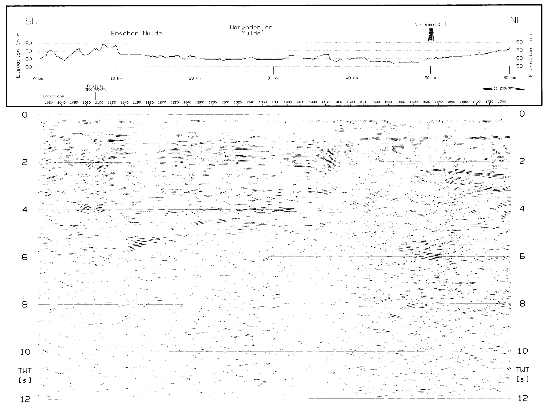DEKORP 2S
The most important results of DEKORP 2S are predominantly SE-dipping reflectors indicating flat-and-ramp tectonics and a differentiation into a highly reflective lower crust and a less reflective upper crust. This structural fabric extends to the NW as shown by the line DEKORP 2N.
In addition:
- SE-dipping thrusts in the upper crust mark the boundary between Saxothuringian and Rhenohercynian below the Spessart Mountains,
- a concentration of diffraction effects occurs in the lower crust (5 - 10 s TWT), predominantly vertically arranged and possibly related to
- post-Variscan extensional or wrench faulting or
- ramps and horsts of the Saxothuringian/Moldanubian thrust system.
DEKORP 2N
Münsterland Cretaceous Basin:
- strong reflections in the upper crust (0 to 4 s TWT) => Upper Cretaceous sediments over folded Carboniferous rocks
- poor reflectivity of the lower crust
- weak Moho reflections at ca. 11 s TWT (more than 30 km depth)
Rhenish Massif:
- SE-dipping reflections in the upper crust represent lithologic contrasts as well as thrust faults known from surface geology,
- highly reflective lower crust with strong, predominantly SE-dipping reflectors => flat-and-ramp tectonics
- Moho reflections at ca. 26 km deepening to the NW
DEKORP 2Q
- highly reflective coal-measures beneath the Cretaceous cover, truncated by normal faults with apparent dips to the NE,
- prominent reflections within the upper crust (2.5 s TWT) in the SW and NE which probably correspond to the Devonian platform carbonates,
- strong reflections in the middle crust (between 5 and 6 s TWT) which were interpreted as the top of Cadomian basement.




